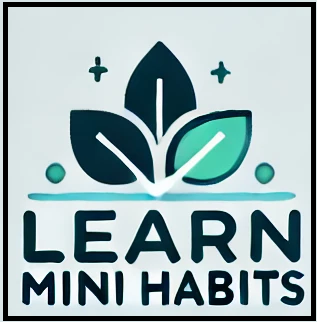Breaking bad habits—whether it’s biting your nails, smoking, or procrastinating—can seem impossible. But it’s not. With the right mindset and strategies, you can make lasting changes that will improve your quality of life. This blog will walk you through proven steps, techniques, and insights to help you break free from those habits and build healthier routines. Plus, we’ll touch on the broader societal issues of addiction, such as the opioid crisis, and how to tackle both personal and public health problems.
Step One: Recognize Your Triggers for Bad Habits –
To truly break a bad habit, you need to first understand what drives it. Bad habits often arise as automatic responses to certain triggers—stress, boredom, or anxiety. Identifying these triggers is the critical first step in breaking free from bad habits.

Step Two: Understand the Need Behind Your Habit –
Bad habits often serve a deeper purpose. Whether you’re overeating because you’re seeking comfort or smoking to relieve stress, these habits fulfill emotional or psychological needs. By understanding why you engage in certain behaviors, you can begin replacing them with healthier habits that meet the same need.
For example, if you find yourself snacking out of stress, exploring other stress-management strategies like exercise or deep breathing could provide a healthier outlet.
Step Three: Establish Healthier Routines to Replace Old Habits –
A key to breaking bad habits is replacing them with healthier routines. Without a replacement behavior, the urge to engage in the bad habit might return. For example, if you’re trying to quit smoking, replacing the urge with a new habit, like drinking water or doing a quick workout, can help.
Creating a daily routine that includes new, positive habits is essential. These can be small, easy-to-do habits that don’t overwhelm you, but over time, they will add up.

Step Four: Manage Stress with Relaxation Techniques –
Stress is one of the leading triggers of bad habits. Managing stress in a healthy way is key to breaking free from harmful behaviors. Techniques such as deep breathing, progressive muscle relaxation, yoga, or mindfulness meditation can help you relax, reduce stress, and eliminate the need for unhealthy habits.
Step Five: Use Positive Reinforcement to Stay Motivated –
Staying motivated is one of the hardest parts of breaking bad habits. One way to keep up your momentum is through positive reinforcement. Reward yourself for every small step you take toward breaking your habit. Whether it’s avoiding junk food for a day or quitting smoking for a week, celebrating small wins will keep you on track.
The Role of Illegally Manufactured Fentanyls and Carfentanil in America’s Overdose Crisis
Breaking personal bad habits is important, but so is addressing widespread public health challenges. The rise of illegally manufactured fentanyls (IMFs) and carfentanil has caused a surge in overdose deaths, especially in the United States. These substances are much stronger than heroin, and their potency has led to a growing overdose crisis.
From 2021 to 2024, IMFs were involved in nearly 70% of overdose deaths in the U.S. Even more concerning is the emergence of carfentanil, a substance up to 100 times stronger than fentanyl, which has led to a sevenfold increase in overdose deaths in recent years.
Public health experts emphasize the need for immediate action—like expanding access to naloxone, educating the public on the dangers of IMFs, and improving access to treatment for substance use disorders.
How to Tackle Both Personal Bad Habits and Societal Addiction Issues ?
Breaking personal bad habits and combating larger addiction crises both require a multifaceted approach. Whether you’re focusing on your personal habits or dealing with public health issues like substance abuse, both require a mix of awareness, proactive steps, and community support.
Addressing addiction—whether to food, cigarettes, or illegal substances—requires understanding the root cause and being committed to change. Whether it’s through therapy, lifestyle changes, or public health interventions, both individual and collective action can make a difference.
Conclusion: Change is Possible—Start Today
No matter how ingrained your bad habits may seem, change is within your reach. By recognizing triggers, understanding your needs, establishing new routines, managing stress, and rewarding yourself for progress, you can break free from harmful behaviors. And when it comes to public health, tackling addiction and overdose crises, such as the rise of IMFs and carfentanil, requires a comprehensive approach.
By focusing on both personal transformation and public health, we can pave the way for a healthier, happier future.
Frequently Asked Questions (FAQ)
What’s the first step to breaking a bad habit?
Recognize your triggers—identify the situations or emotions that prompt your bad habit, and work on addressing them.
How long does it take to break a bad habit?
It can take anywhere from 21 to 66 days to break a habit, depending on the person and consistency.
How can I replace my bad habit with a healthier one?
Find a healthier alternative to meet the same emotional need your bad habit fulfills, like exercise for stress relief instead of smoking.
What if I slip up during the process?
Setbacks are normal. Don’t be discouraged—just get back on track and focus on the progress you’ve made.
How can I stay motivated?
Set small, achievable goals and celebrate your successes, no matter how small. Positive reinforcement helps keep you motivated.

